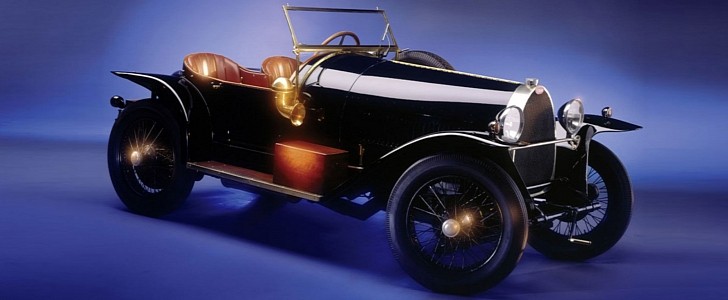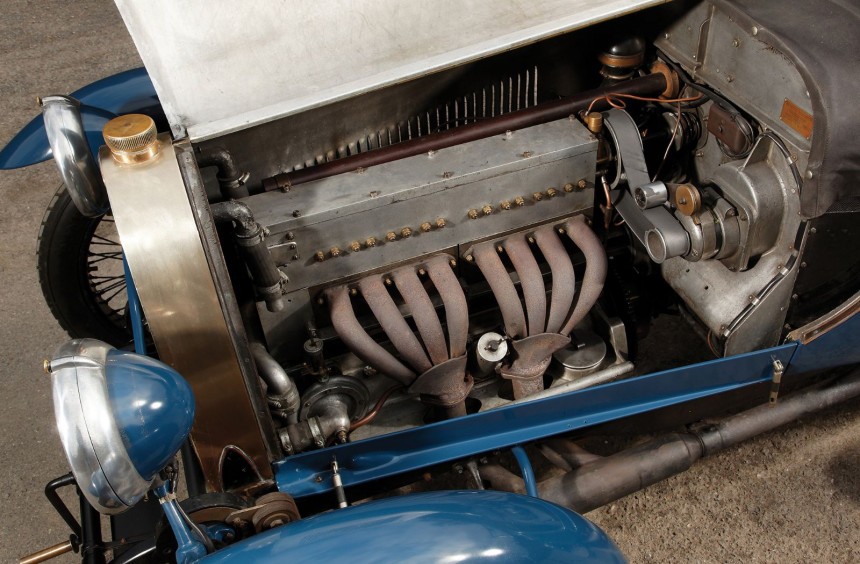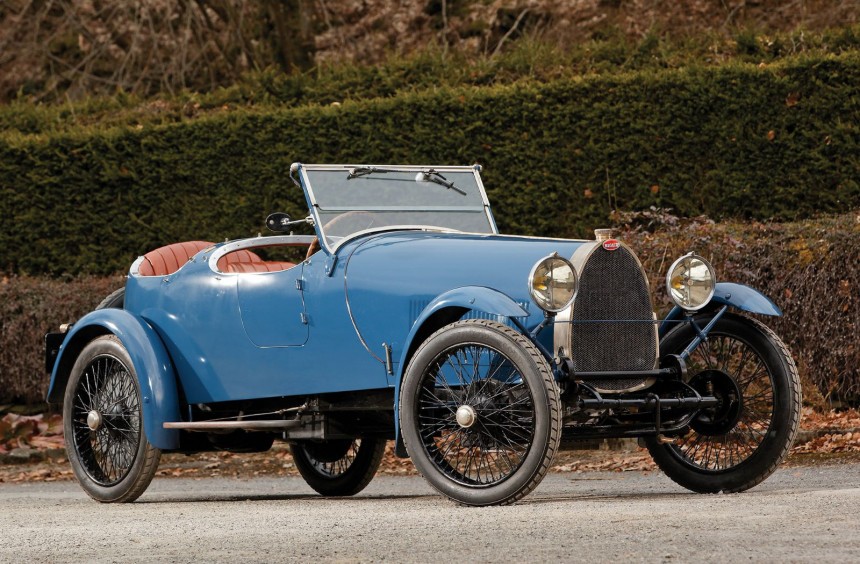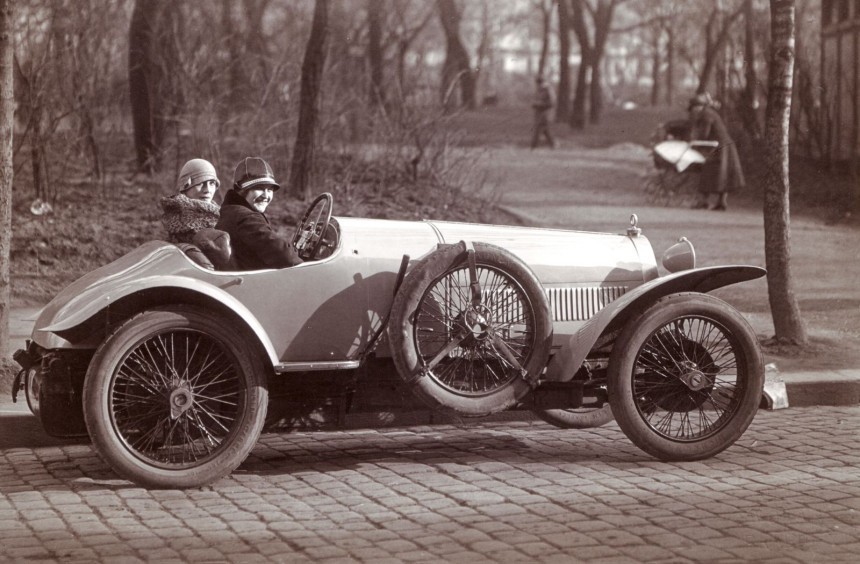With a new eight-cylinder built for Grand Prix racing, as well as other technical innovations, the Type 30 was one of the first, true production sports cars in the world.
In 1921, Ettore Bugatti was developing a new race car that he dubbed Type 29. The initial design was centered around an all-new, 3.0-liter, inline-eight derived from the Type 28 prototype. However, the engineer was forced to get back to the drawing board after a sudden change in Grand Prix regulations which limited displacement to 2.0 liters.
Since this was the 1920s, the engine architecture was a lot different than what we see today. It was based on two four-cylinder blocks with a bore and stroke of 60 mm x 88 mm (2.36 in x 3.46 in). These blocks were held together by a single-piece crankcase, while power from the crank was transferred to the overhead camshaft via a front-mounted vertical shaft.
The valvetrain’s innovative configuration included two overhead intake valves and one larger outlet valve for quick gas exchange – a design pioneered by Bugatti on an aircraft engine. The spark plugs were initially fired up by a dual magneto ignition, then a battery ignition system kicked in. The air-fuel mixture was supplied by a couple of Zenith carburetors, and exhaust gases were pushed out through two manifolds bolded on the left side of each block.
With the redline at 3,800 rpm, the eight-cylinder could produce from 75 to 100 hp. It was fitted on a short wheelbase prototype of the Type 29 racer, proving extremely promising through initial tests.
Bugatti decided to use this engine for a new road-going model introduced in 1922. Christened Type 30, it would become one of the world’s first, true sports cars and arguably the most sophisticated production vehicle of the era.
Using the forged front axle from the Type 22, the new car was the first Bugatti production model to feature front brakes. This might not seem very impressive these days, but back then, the vast majority of motorized vehicles only employed brakes on the rear axle, mainly because their top speeds rarely exceeded 50 mph (80 kph).
For the powerful Type 30 which could reach up to 90 mph (145 kph), the Italian-born engineer developed front drums with cast brake shoes that directly interacted with the rear drums using helical notches - a system that exponentially improved stopping power. But that was not all. The front brakes were also connected to a hydraulic system, making the car one of the first to ever feature power-assisted brakes.
The Type 30’s overall reliability was enhanced by a new, patented screw lock design. With an integrated washer and an innovative thread, the screws that held the car together no longer came loose due to vibrations – a common problem at the time.
Bugatti also enhanced comfort levels using a multilayered leather package for the seats that helped absorb the shocks caused by poor road conditions.
Built between 1922 and 1926, the Type 30 featured various bodywork variations, including sporty four-seaters or two-seater coupes and convertibles.
Before replacing this revolutionary model with the Type 38, the manufacturer sold around 600 units, all of which were praised by the owners for their power delivery and impeccable handling.
A century after its introduction, the Type 30 is considered a cornerstone of Bugatti’s evolution and a catalyst for the brand’s success during the 1920s and 1930s. With race car pedigree, it is also remembered as one of the first authentic sports cars ever built.
You can see a surviving example being driven around the streets of Munich, Germany in the video below posted on YouTube by MunichCarspottingBros.
Since this was the 1920s, the engine architecture was a lot different than what we see today. It was based on two four-cylinder blocks with a bore and stroke of 60 mm x 88 mm (2.36 in x 3.46 in). These blocks were held together by a single-piece crankcase, while power from the crank was transferred to the overhead camshaft via a front-mounted vertical shaft.
The valvetrain’s innovative configuration included two overhead intake valves and one larger outlet valve for quick gas exchange – a design pioneered by Bugatti on an aircraft engine. The spark plugs were initially fired up by a dual magneto ignition, then a battery ignition system kicked in. The air-fuel mixture was supplied by a couple of Zenith carburetors, and exhaust gases were pushed out through two manifolds bolded on the left side of each block.
Bugatti decided to use this engine for a new road-going model introduced in 1922. Christened Type 30, it would become one of the world’s first, true sports cars and arguably the most sophisticated production vehicle of the era.
Using the forged front axle from the Type 22, the new car was the first Bugatti production model to feature front brakes. This might not seem very impressive these days, but back then, the vast majority of motorized vehicles only employed brakes on the rear axle, mainly because their top speeds rarely exceeded 50 mph (80 kph).
The Type 30’s overall reliability was enhanced by a new, patented screw lock design. With an integrated washer and an innovative thread, the screws that held the car together no longer came loose due to vibrations – a common problem at the time.
Bugatti also enhanced comfort levels using a multilayered leather package for the seats that helped absorb the shocks caused by poor road conditions.
Before replacing this revolutionary model with the Type 38, the manufacturer sold around 600 units, all of which were praised by the owners for their power delivery and impeccable handling.
A century after its introduction, the Type 30 is considered a cornerstone of Bugatti’s evolution and a catalyst for the brand’s success during the 1920s and 1930s. With race car pedigree, it is also remembered as one of the first authentic sports cars ever built.
You can see a surviving example being driven around the streets of Munich, Germany in the video below posted on YouTube by MunichCarspottingBros.














